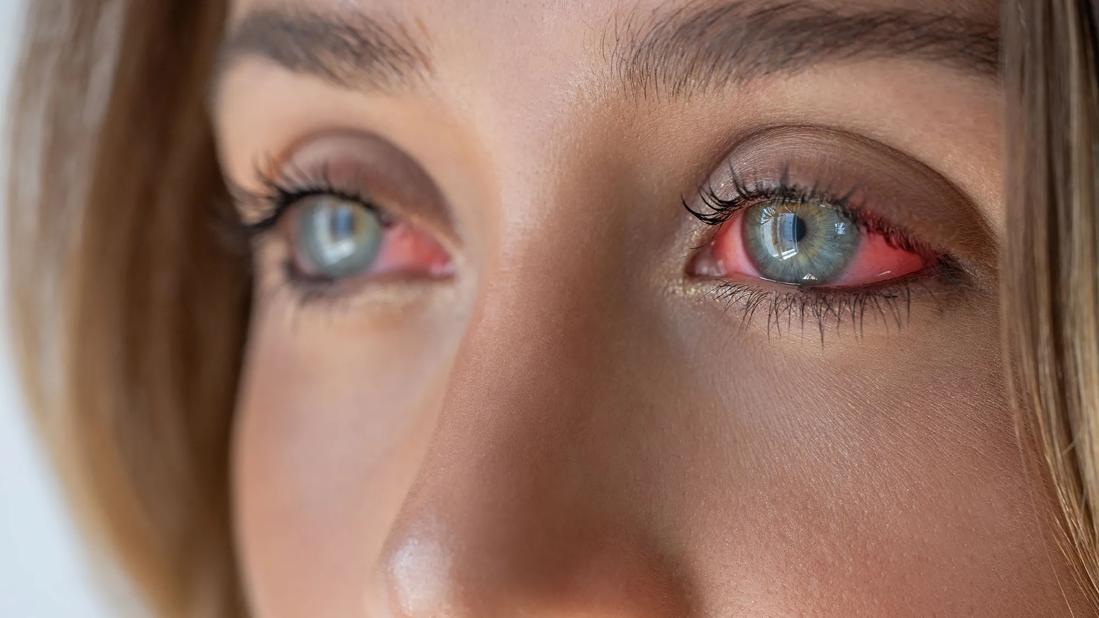Best practices in conducting virtual eye exams

Even ophthalmologists can take advantage of relaxed regulations on telehealth services during the COVID-19 crisis.
Advertisement
Cleveland Clinic is a non-profit academic medical center. Advertising on our site helps support our mission. We do not endorse non-Cleveland Clinic products or services. Policy
Since March, Shalini Sood-Mendiratta, MD, of Cleveland Clinic’s Cole Eye Institute, has seen up to 10 eye patients per day via Google Duo or FaceTime. (Other widely available video chat applications can be used as well, at least temporarily, thanks to eased HIPAA restrictions.)
One patient, a 90-year-old with glaucoma and acute red eye, couldn’t leave her long-term care facility due to a hip fracture and high risk of severe illness from COVID-19. Instead, she had a virtual visit, which allowed Dr. Sood-Mendiratta to detect an allergy to glaucoma medication. The conjunctivitis improved once the patient changed medications.
“Seeing patients in person is still the gold standard for ophthalmology, but there’s quite a bit of information we can extract through virtual visits,” says Dr. Sood-Mendiratta. “That prevents some patients from coming to the office, supporting social distancing efforts. In critical situations, like we’re in today, we need to view virtual visits as a reasonable option.”
According to Cole Eye Institute ophthalmologist Rishi P. Singh, MD, “At this point, we use telemedicine to visualize lids and lashes, and do an anterior segment exam — anything before the lens — the best we can. Impressively, the video capability is often sufficient for us to diagnose many red-eye issues. Then we can discuss management with the patient.”
Examples include acute red eye, dry eye, blepharitis, allergic conjunctivitis, styes and subconjunctival hemorrhages. Ophthalmologists also can triage vision changes and other symptoms and assess whether an in-office visit is advised.
Advertisement
“Vision assessment is one thing we haven’t needed to do remotely until now,” says Dr. Sood-Mendiratta. “It’s really pushing the envelope for us.”
Currently Cole Eye Institute providers direct telehealth patients to an at-home vision test on the American Academy of Ophthalmology website. Patients print out an eye chart, post it in their home, sit or stand 10 feet away, and check their own visual acuity.
“Clearly we’d like to find another way of testing vision that’s more exact and more user friendly,” says Dr. Sood-Mendiratta. “There’s an online vision test being developed now that potentially could send reliable patient data directly to a provider. Other innovations, like at-home tonometry and fundus photography, also are in development. We can’t virtually check intraocular pressure or conduct dilated exams yet, but it’s coming.”
Virtual eye exams at Cole Eye Institute typically follow these steps:
Advertisement
Ophthalmology providers can use only evaluation and management (E/M) codes — not eye codes — to bill for virtual visits. Virtual visit codes differ for new and established patients.
“The level of selection is based on medical decision making or time associated with the encounter that day,” says Dr. Sood-Mendiratta. “Documenting history or physical exam is not required.”
When coding by time, consultation or coordination of care must make up more than 50% of total physician face-to-face time, she notes. Minutes of face-to-face time must be documented, as well as any family members or others present during the virtual visit.
To make virtual visits even more valuable, Dr. Sood-Mendiratta recently began offering hybrid care, a combination of in-office and virtual visits, for patients requiring tonometry readings.
Patients spend less than five minutes in the office and have contact with only one technician, who is wearing a mask and eye protection.
The technician first screens the patient for COVID-19 symptoms and then escorts the patient to an isolated clinic area. There the technician checks IOP and gives the patient printed distance and near eye charts as well as an Amsler grid to check visual acuity at home.
Later, Dr. Sood-Mendiratta follows up by virtual visit or telephone — now with valuable IOP and visual acuity measurements.
“The COVID-19 pandemic is a transformative time in medicine,” says Dr. Singh. “Ophthalmology practices can rise to the occasion with new ways of serving and connecting with patients. We’re at the beginning of a new era in vision care.”
Advertisement
Everyone cherishes their vision, but this time of social distancing and shut-downs can be especially stressful for patients with macular degeneration, glaucoma and other vision-threatening conditions, adds Dr. Sood-Mendiratta.
“It’s good for them to be in touch with us, so we can reassure them when things are stable or advise them when it’s time to come for an in-office visit,” she says. “Telehealth helps us be there for them no matter what.”
Follow Dr. Singh on
Facebook: @docrishisingh
Instagram: @drrishisingh
Twitter: @drrishisingh
Advertisement
Advertisement

Patients report improved sense of smell and taste

Clinicians who are accustomed to uncertainty can do well by patients

Unique skin changes can occur after infection or vaccine

Cleveland Clinic analysis suggests that obtaining care for the virus might reveal a previously undiagnosed condition

As the pandemic evolves, rheumatologists must continue to be mindful of most vulnerable patients

Early results suggest positive outcomes from COVID-19 PrEP treatment

Could the virus have caused the condition or triggered previously undiagnosed disease?

Five categories of cutaneous abnormalities are associated with COVID-19